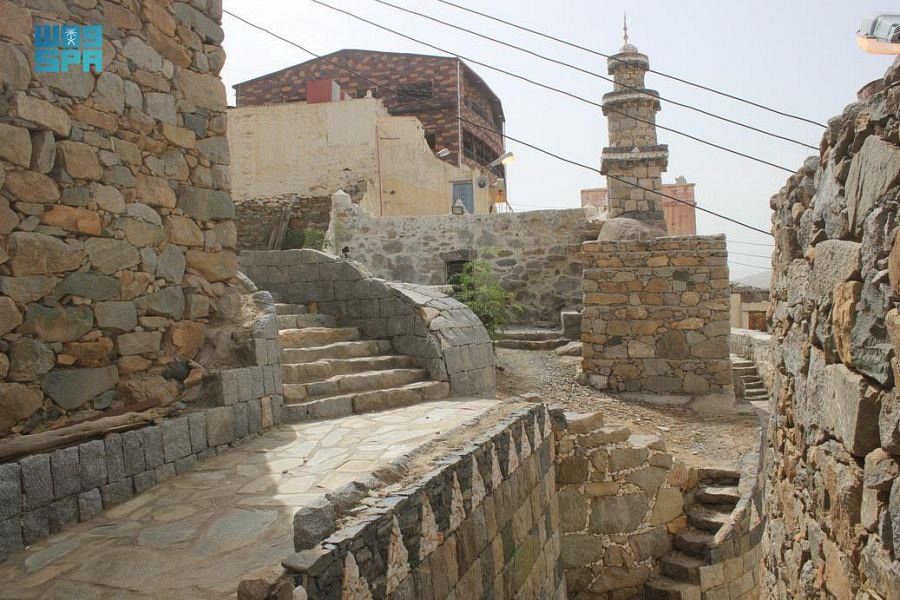
As Part of Second Phase for Developing Historical Mosques, Prince Mohammed bin Salman Project Introduces New Harmony between Historical, Aesthetic Changes for Al-Bahah, Najran Mosques
With a new harmony between historical and aesthetic changes, the Prince Mohammed bin Salman Project for Developing Historical Mosque restores the models of Al-Bahah and Najran regions through reviving their old architectures and maintaining their historical heritage.
In Al-Bahah, the project targeted Al-Safa Mosque in the center of Baljurashi Governorate, which is among the oldest schools of the Kingdom of Saudi Arabia and was built in the first Hijri century some 1350 years ago.
Some say that the first who built Al-Safa Mosque was Sufian bin Auf Al-Ghamdi, a companion of Prophet Mohammed, peace be upon him, where the mosque played a prominent social role for its being a place for the meetings of the village residents and solving their disputes between Al-Maghrib and Al-Isha prayers.
The area of the mosque before and after renovation will remain the same at 78 square meters and its capacity will be the same at 31 worshippers.
In Najran, Al-Zubair bin Al-Awwam Mosque in the western area of Najran, will witness rehabilitation and renovation for its being one of the oldest mosques that was built in 1386 Hijri during the reign of Prince Khalid bin Ahmad Al-Sudairi.
The mosque is located near the historical emirate palace in Najran to the north of King Abdulaziz Road. The mosque was first built with mud, while its mutawada (ablution) areas were built on the southern heritage pattern. The area of the mosque will remain the same at 1,436 square meters and its capacity will stand unchanged at 1,000 worshippers.
The Prince Mohammed bin Salman’s project to develop historical mosques aims to rehabilitate and restore 130 historical mosques in various regions of the Kingdom of Saudi Arabia and to highlight their civilizational and cultural dimensions by preserving their original urban characteristics.
A total of 30 mosques will be included in the second phase of the Prince Mohammed bin Salman Project for Developing Historical Mosques that covers all regions of the Kingdom of Saudi Arabia, where these mosques will be developed according to modern mechanisms that guarantee the quality of good material and architectural designs after conducting an accurate assessment of the history, characteristics and features of every mosque.



























